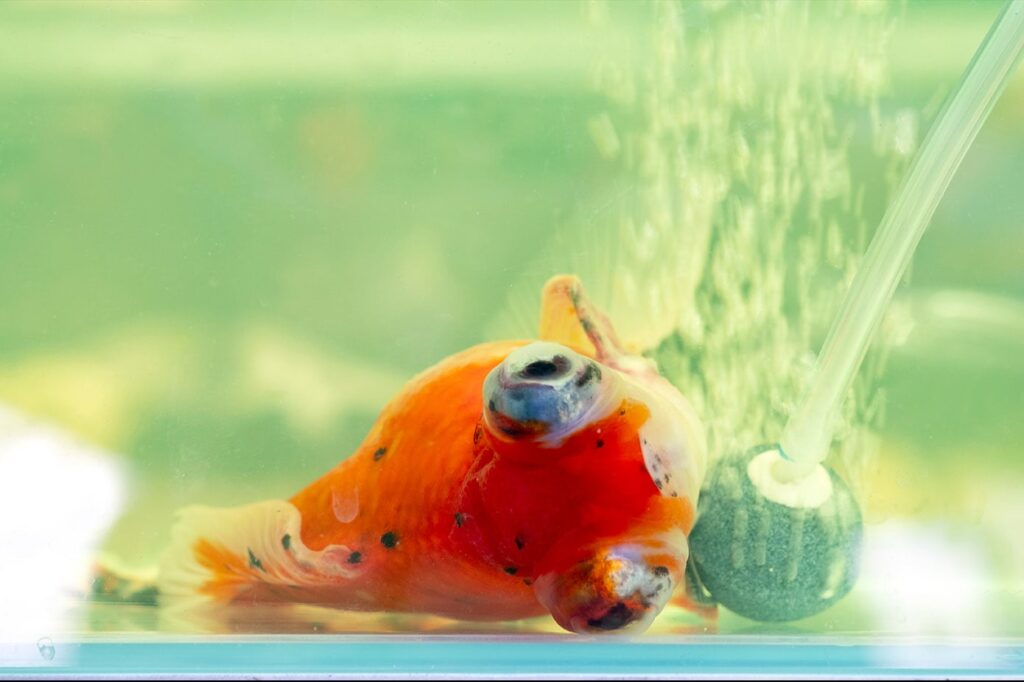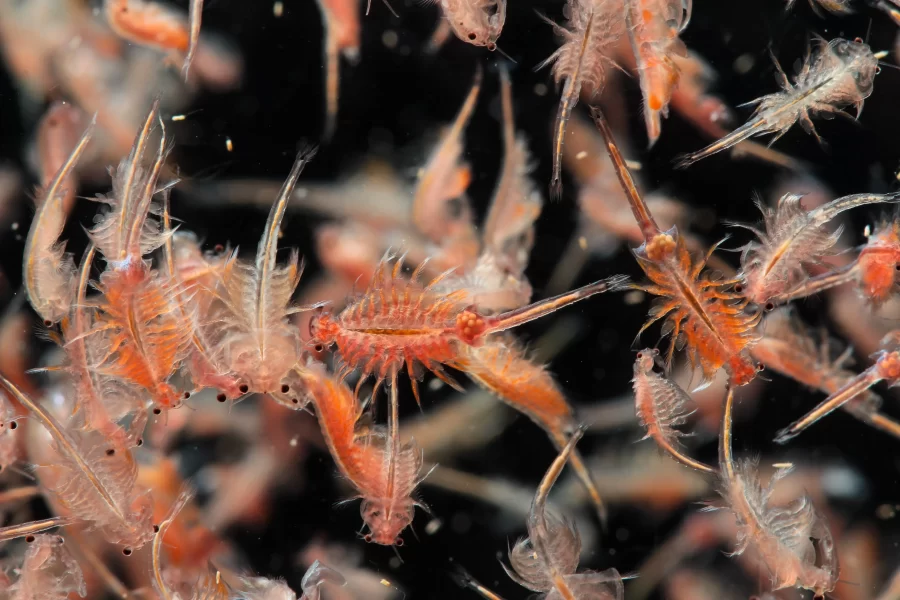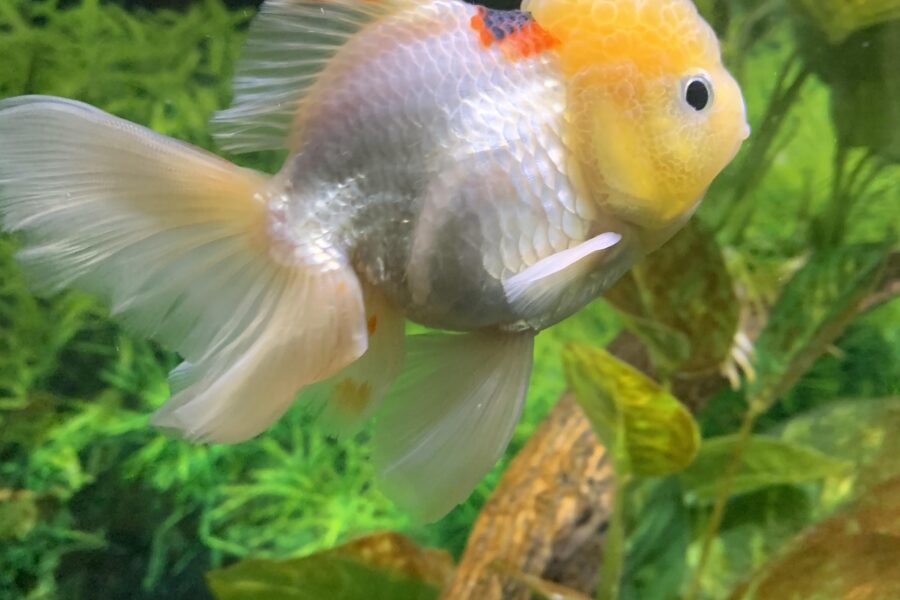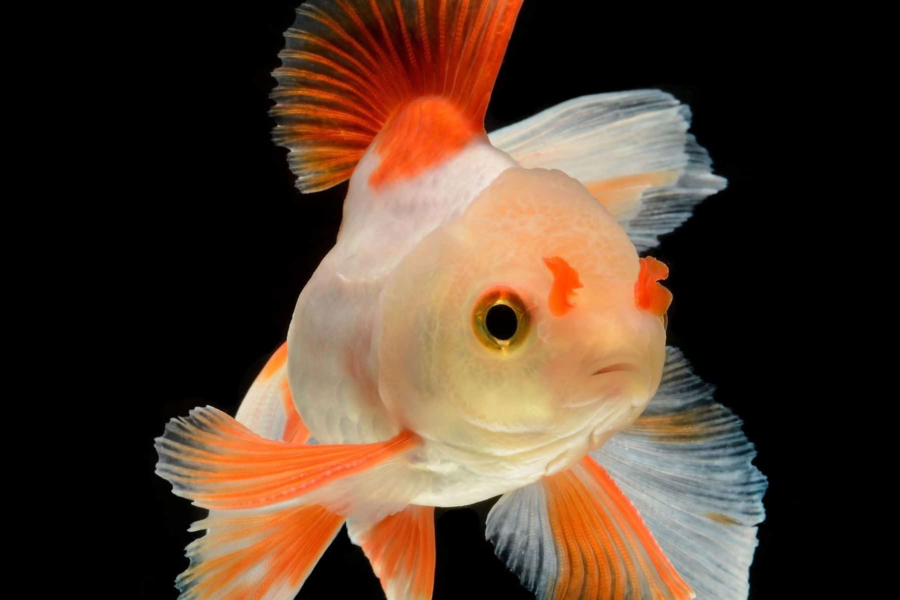
Fish Tuberculosis in Goldfish— it sounds like a fishy fairytale, right? Well, brace yourselves, because this is a real, albeit misunderstood, medical fish fuss. Notorious among goldfish owners, it’s shrouded in myths as thick as a foggy fish tank.
The journey down this rabbit hole—or should I say, fish hole—begins with recognizing the symptoms. Misdiagnosis? Ah, a treacherous pitfall indeed! We’ll dive into the rough waters of diagnosis, treatment, and prevention, debunking folklore along the way. All aboard on this under-the-sea adventure!
What is Fish Tuberculosis in Goldfish?

Definition of Fish Tuberculosis in Goldfish
Fish Tuberculosis is a sneaky disease that even the cutest and most innocent goldfish can’t avoid. Think of it like an annoying, uninvited guest who crashes your pool party, only this rude intrusion actually threatens to turn your golden bubbly friend into a floaty casualty (quite morbid, I know!).
Prevalence in Goldfish
It’s not just a fear-mongering fable, folks. Our blinky-eyed, water-loving pals are susceptible to this troublesome disease. In fact, goldfish are often vulnerable to Fish Tuberculosis primarily due to their aquatic lifestyle and the invisible beasts (read bacteria) lurking in their watery abode.
Common Myths
Just like within the gossip-churning mills of Hollywood, there’s plenty of misinformation swirling around about Fish Tuberculosis. No, your goldfish can’t catch it from watching too much “Finding Nemo”, nor will they succumb to it simply by swimming counter-clockwise (I’ve tested, folks). Let’s dive deeper in the coming sections to separate the fishy facts from fiction.
Feeling off balance? That’s what happens when a mysterious disease takes center stage! But don’t fear as we’re about to tread in the clear waters. We’re now hopping onto our little investigation boat and setting sail into ‘Symptom-ville’. Hang on tight; it’s going to be a sail of discovery!
Symptoms of Fish Tuberculosis in Goldfish

Ahoy, fish enthusiasts! Let’s start by addressing a pesky little problem named Fish Tuberculosis. Now, imagine your goldfish doing the doggy paddle or suddenly turning into an Olympic backstroke swimmer. These are just a taste of the odd, flippy-floppy behavior you might notice if your golden buddy is suffering from this disease.
Signs of Fish Tuberculosis in Goldfish
Swimming irregularities are just the tip of the symptoms iceberg. Tuberculosis is a deceptive troublemaker. When it hits your goldfish, a sudden weight loss might ruffle your scales. Tumors may sprout. Fin and scale color may change. But keep sailing, it’s a rough sea, but we’ll get through this.
The Danger of Misdiagnosis
Now here’s the big, scary shark of the situation: fish tuberculosis is an expert at hide and seek. With symptoms as common as a pirate’s ‘argh’, misdiagnosis is a real threat. Your goldfish might just have a bellyache or a mood swing, but play it safe. Better an over-cautious captain than a shipwreck!
Symptoms of Fish Tuberculosis in Goldfish
The progression of symptoms in fish tuberculosis isn’t a steady stream, it’s more like unpredictable waves. Symptoms could start with loss of appetite, then hit the breaks, only to speed off again with a fin deformity. Staying vigilant is key, this isn’t a calm bay, it’s a stormy sea.
Brace yourselves, sailors! Up next, we’re diving into what causes this pesky thing and the risk factors ready to ambush your scaly pals. Knowledge is power, or in this case, the perfect tool to keep your ship afloat and your goldfishes healthy.
Causes and Risk Factors

Well, let’s cut right to the chase. Fish tuberculosis, like most illnesses, isn’t some magical curse. There are causes and risk factors that can send your goldfish on a one-way ticket to TB town.
Role of Environment
The stage of any dramatic scene is important, and your goldfish’s tank is no different. Poor water quality, low oxygen, and wrong temperature can trigger disease initiation. Don’t turn your fish tank into a bad reality show. Instead, ensure a clean, aeration-providing, temperature-balanced water for your goldfish.
Stress Factors
Okay, so here comes the real kicker. These delicate little swimmers aren’t made for the hustle and bustle. Overcrowding, incorrect diet, bullying from larger fish – these are all turbulent stress inducers. Stress makes your goldfish’s immune system dip, making them susceptible to TB. It’s like their mini version of Monday blues.
Common Misconceptions about Transmission
Contrary to the rumor mill, fish tuberculosis isn’t as contagious as you might think. It’s not as easy as catching a cold in a rainy subway station. The disease usually transmits via open wounds or ingestion of infected material. So unless your goldfish is into cannibalism or underground fight clubs, the risk is considerably lower.
Now that you’ve got a clearer picture of the causes and risks, let’s swim on to understanding how to diagnose fish TB next. Is it all about laying hands on a fish X-ray or microscopic sea goggles? Let’s find out shortly in our next section.
Diagnosing the Trouble Underwater

So, how do you end the guessing game? Well, diagnosing fish tuberculosis isn’t your typical walk in the park (or, swim in the tank, perhaps). Let’s take a plunge into the diagnostic process.
Fishy Diagnostic Methods of Fish Tuberculosis in Goldfish
Getting to the root of the issue begins with a careful assessment, often a simple observation won’t cut it. Mind you, peering into the tank and speculating isn’t quite the Sherlock-level sleuthing we need here. Lab tests are the real deal, often involving skin smear samples or body fluid inspections. However, a definitive diagnosis might even require the examination of a deceased goldfish – a disheartening but necessary step.
A Challenge Worth Beating
A diagnosis of fish tuberculosis is not as straightforward as with regular human TB. It’s not like your goldfish can cough into a tissue for a sputum test, can they? Testing complications arise due to the unique anatomy of our aquatic friends. The lack of specific tests and the fact that early symptoms are easily mistaken for other diseases don’t make it easier either. Trust me, It’s a bit like fishing in the dark.
A Visit to the Fish Doc!
So, when do you ring the alarm and take your goldfish to a vet? If you notice poor eating habits, unusual swimming patterns, or weight loss in your goldfish, it’s time to act. Early detection is the key. Regardless of how minor the symptoms might appear, consult a vet if in doubt. After all, better safe than sorry, right?
As we’ve surfaced from the deep waters of diagnosis, let’s keep swimming upstream. Next up, we’ll explore how to treat this tricky ailment, turning the tide in your goldfish’s favor. Stick around, as we navigate these challenging waters to healthier shores.
Treating Fish Tuberculosis in Goldfish

Fish TB is a bummer. But the good news is, there are treatments that can help get your goldfish back in the swim of things. Let’s dive into the details.
Common Treatments
The most common treatment for fish TB is antibiotics. Medical maestros like Kanamycin and Vitamin B-6 are often utilized. Slow and steady wins the race, and these treatments must be consistent to see results. Remember, you’re not alone; seek advice from a vet if unsure about administering the medication.
As we transition into the next section, get ready for a reality check. Not to burst your bubble but, effectiveness of treatments can vary.
Treatments of Fish Tuberculosis in Goldfish
Treatments for fish TB can be hit or miss. Often, the effectiveness depends on the stage of the disease. Early diagnosis can boost chances of success. Unfortunately, severe cases can be incurable. But chin up, all hope isn’t lost! Plenty of fish keep bouncing back after treatment.
Next, we tackle the art of caregiving for a sick goldfish. Get your pet-parent hats ready!
How to Manage and Support Goldfish During Treatment
During treatment, maintaining a tip-top, stress-free environment is key. Keep an eye on water temperature and quality. Minimize handling and avoid overcrowding. Just think of your tank as a luxury wellness spa for your fish – only the best!
That’s a crash course on treating fish TB. Up next, we’re talking about prevention tactics. Because the best treatment is undoubtedly prevention – stay tuned for powerful tips!
Preventing Fish Tuberculosis in Goldfish

In the world of Fishland, prevention is truly the best cure—especially when dealing with the tricky foe, fish tuberculosis. It’s like that old saying goes, “An ounce of prevention is worth a pound of cure.”
Importance of Prevention
Consider this: it’s much easier to prevent fish tuberculosis in your goldfish than to treat it. Much like prioritizing oil changes over engine replacements in cars, focusing on disease prevention will save you a lot of heartache, time, and money in the long run.
Practical Steps for Prevention
Preventing fish tuberculosis isn’t rocket science. But it requires an aquarium champ’s proactive dedication. Always decontaminate new items heading into the tank and frequently check water quality. And hey, let’s not forget to quarantine sick fish. Because “Sharing is Caring” doesn’t work in the fish health context!
Creating a Healthy Environment for Goldfish
Anyway, the secret sauce here is creating a stress-free environment. Because guess what? Stress-fueled goldfish are more prone to catch this annoying disease! So, regulate their food and light cycles, keep their H2O clean, and maintain a peaceful, non-overcrowded tank. Your goldfish will thank you for it, trust me!
Wrap Up
In this concise guide, we’ve travelled through the murky waters of Fish Tuberculosis, dispelling common myths and misconceptions about its prevalence, particularly in goldfish. We’ve fathomed the complexities of its symptoms, shedding light on the perils of misdiagnosis and the dangers the progression of these symptoms can have on your finned friend.
Finally, we adventured through the channels of diagnosis, emphasizing the challenges, and noting the importance of consulting a veterinarian. We navigated the terrain of treatment options, their effectiveness, and supporting your goldfish during this trying time. And to sail smoothly in future, we anchored down on the importance of prevention and creating a healthy environment for your goldfish, keeping Fish Tuberculosis at bay. Your goldfish don’t have to be just another ‘fish in the sea’, with the right care, they can thrive!
Frequently Asked Questions (FAQ)
Question: What exactly is fish tuberculosis?
Answer: Fish tuberculosis, also known as Mycobacteriosis, is a bacterial disease that affects fish including goldfish. It’s caused by Mycobacterium marinum and can lead to serious health issues for your aquatic pets.
Question: How can I spot the symptoms of fish tuberculosis in my goldfish?
Answer: Symptoms can vary, but common ones include loss of appetite, discoloration, lethargy, and unusual swimming patterns. It’s important to watch for gradual changes in your goldfish’s behavior and appearance.
Question: How is fish tuberculosis transmitted among goldfish?
Answer: The bacterium responsible for fish tuberculosis is often present in the aquarium environment and can enter the fish’s system through its food, water, or injuries. Stressful conditions can make goldfish more susceptible.
Question: Is it hard to diagnose fish tuberculosis?
Answer: Yes, it can be challenging as symptoms can mimic other diseases. Professional diagnosis from a veterinarian who specializes in aquatic diseases is recommended.
Question: What treatment options are there for fish tuberculosis?
Answer: Treatment typically involves anti-mycobacterial medications, though it can be challenging due to the antibiotic-resistant nature of the disease. Consult with a veterinarian for proper treatment options.
Question: How can I prevent my goldfish from getting fish tuberculosis?
Answer: Maintaining a clean and stress-free environment for your fish is key. Regular water changes, proper feeding, and avoiding overcrowding can significantly reduce the risk of disease.



